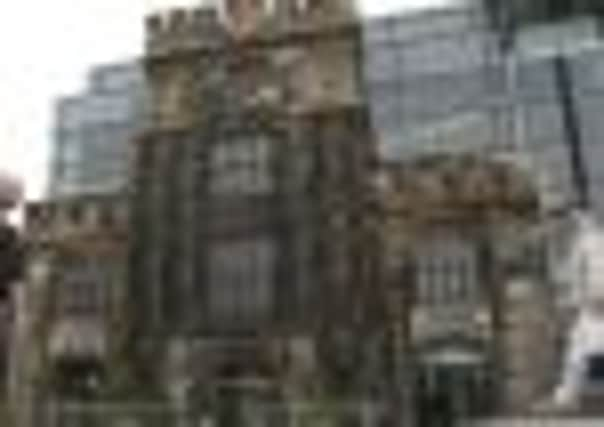Ewan Leitch: Our prized heritage must be protected


ZONAL Retail Data Systems’ proposal to extend its Forth Street offices on to Union Street raises two planning issues for this location in Broughton: size and quality of design.
The streets around Picardy Place and Broughton Street were laid out in 1800 by Robert Burn, the architect of the Nelson Monument and the Hermitage of the Braid. The east end of Forth Street was the earliest part built as a terrace of two-storey townhouses with gardens to the rear; it remains the best preserved part of the street.
Advertisement
Hide AdAdvertisement
Hide AdAlthough they do not have mews behind them you can find examples nearby, in Broughton Street Lane for instance, and these are normally one and a half storey. It is this urban scale, of terraced houses with gardens and smaller mews some distance behind, that should be preserved. The Union Street site is an ideal opportunity to remove an ugly building and replace it with something that improves and reinforces the character of the area. The problem is that the new building is too large at three storeys. Being less than three metres away from the back of the townhouses may prevent any future residential restoration of the townhouses; if Zonal’s success continues and it expands again and moves elsewhere it would leave houses looking at a blank wall.
The architecture proposed is an example of Georgian gone wrong. Classical design is often referred to as a language of architecture and therefore follows a set of rules for which Edinburgh’s Georgian New Town is renowned, from the grand scale of Charlotte Square to the more modest Forth Street. Around Broughton there are lots of familiar Georgian details: palace fronts, columns, big windows, arched fanlights, channelled ashlar, continuous cill bands to name just a few, and all placed in a certain formal order. While the use of real stone and natural slate might look good in this proposal the other details have gone awry and the built result would be second-rate, misusing the hallmarks of Georgian Edinburgh.
There are locations where a historicist approach to architecture is desirable such as the setting for Robert Adam’s marvellous set-piece architecture of Charlotte Square where elegant Georgian elevations were replicated on Glenfinlas Street in 1990. But there are opportunities for alternative approaches within historic Edinburgh and on Hart Street there is an award-winning house which replaced an industrial building, in an unashamedly contemporary style, it is appropriate in scale and eye catching modern architecture.
Good architecture responds to a site sensitively and sometimes that means fitting in well while other sites allow for a contrast. What architecture cannot do is mask a building that is too big for its location, in any style. The Cockburn Association supports new architecture of the highest quality be it historicist or contemporary; just good enough is not good enough for Edinburgh.
Does this sound rather precious? Well, Edinburgh is precious to the Cockburn Association and while we sympathise with the desire of a significant local employer to expand within its current location, it was a demand for the best by our ancestors that has resulted in the beautiful city we have today and it is not unreasonable to continue to aim for the highest quality of architecture for our descendants to enjoy.
TOP OF THE CLASS
Glenfinlas Street, New Town, 1990
These buildings by Cowell Matthews complete a Georgian street plan
No.112 The Canongate, 1999
The design by Richard Murphy Architects refers to Old Town buildings which have disappeared and been replaced with Georgian and Victorian successors
Barlas House, Hart Street, New Town, 2002
A good example of contemporary architecture within a conservation area
MUST DO BETTER
New Uberior House, Lothian Road, 2000
Does this enhance Edinburgh’s architecture?
Omni Centre/Glasshouse, Greenside Place, 2002
Advertisement
Hide AdAdvertisement
Hide AdA combination of clingfilm modernism and facadism, resulting in a poor contribution to Edinburgh’s architectural heritage
Radisson Blu Hotel, Royal Mile, 1992
This super-sized building is not hidden by its mock medieval cloak
• Euan Leitch is assistant director of the Cockburn Association, The Edinburgh Civic Trust